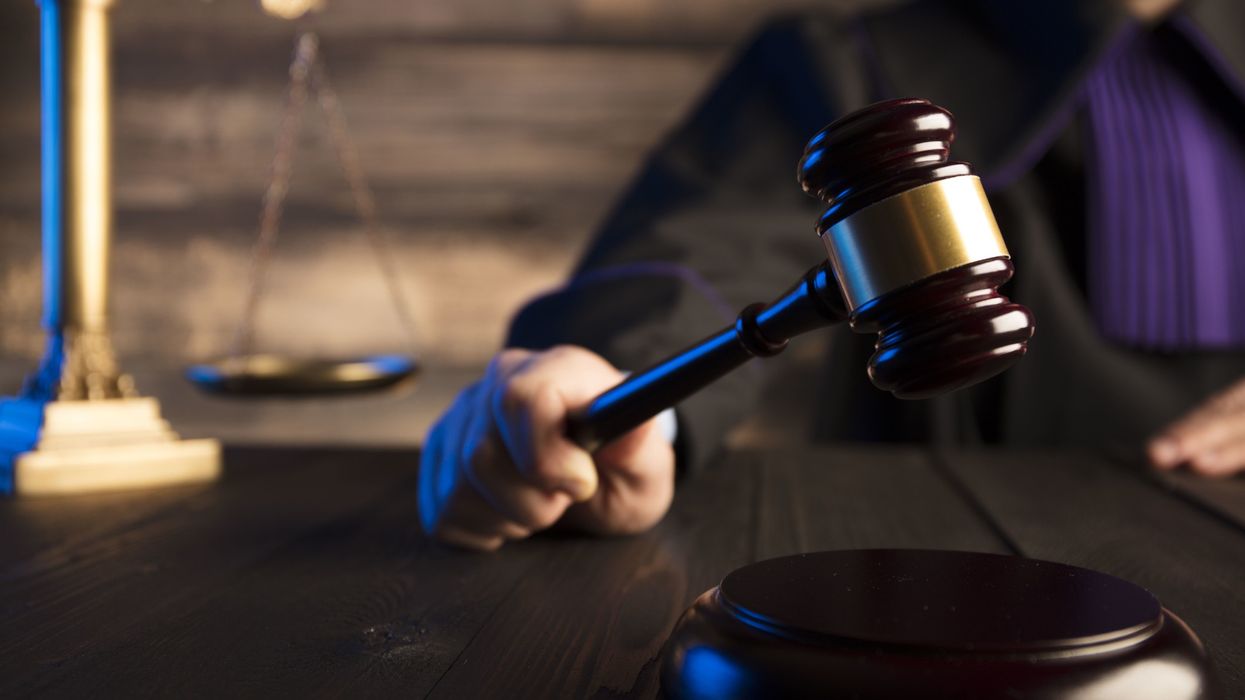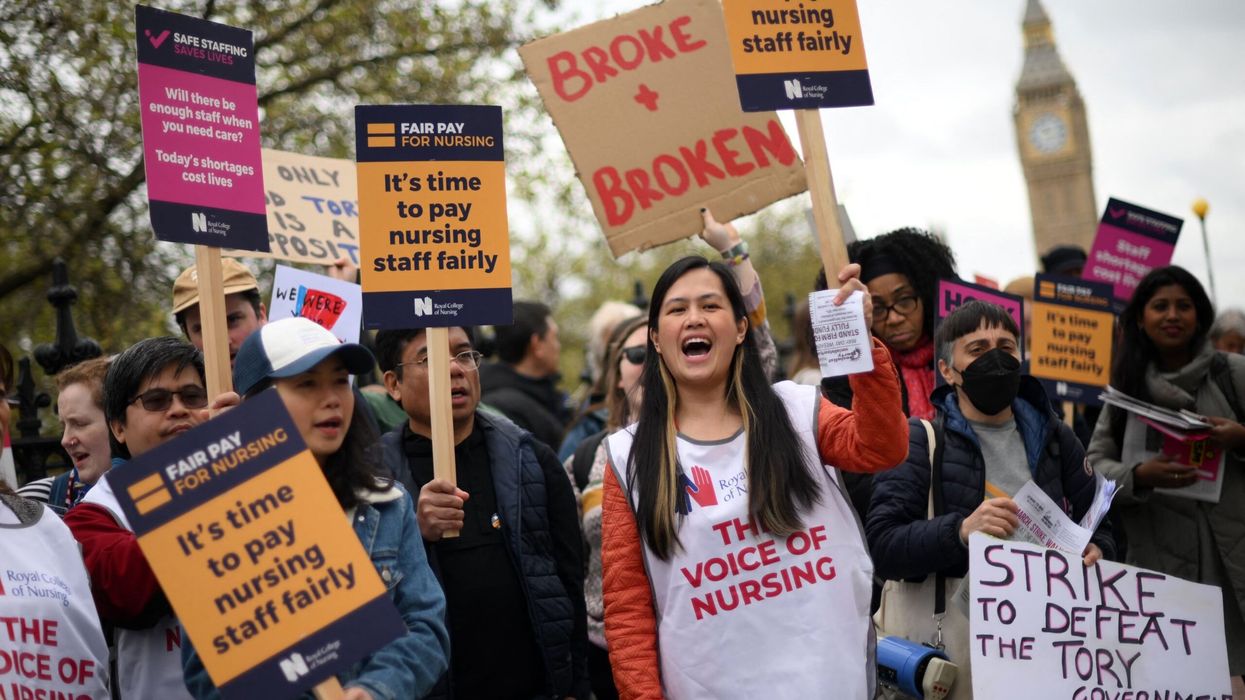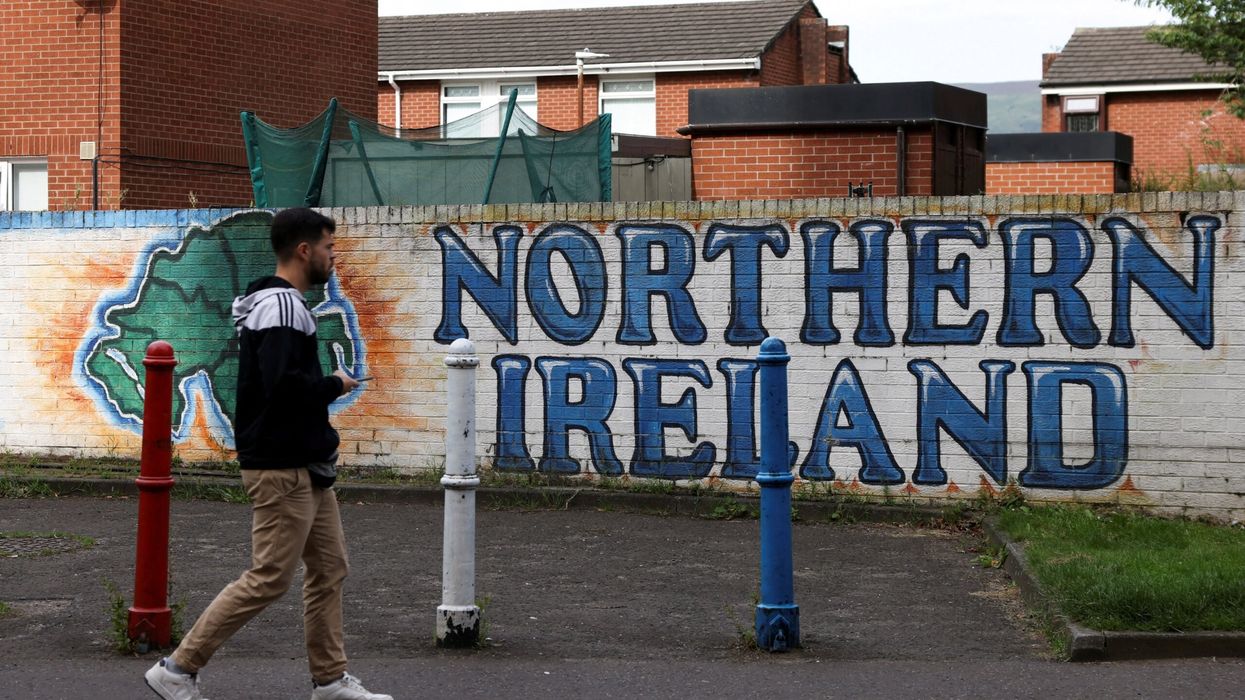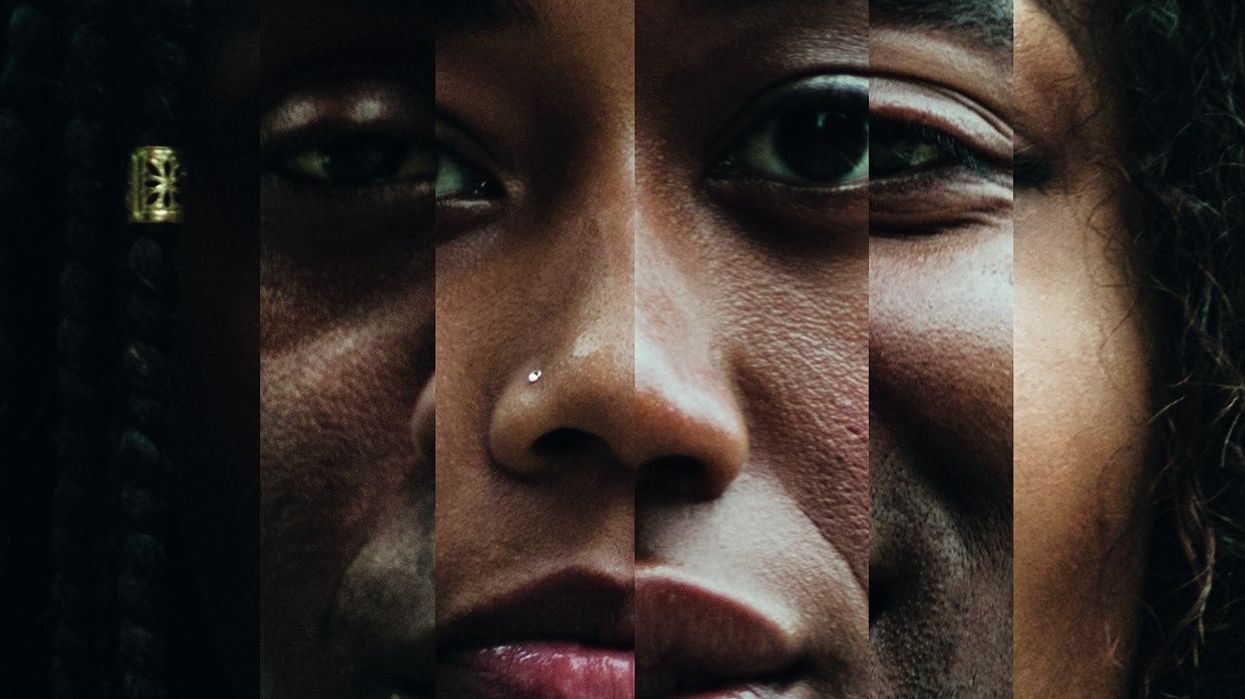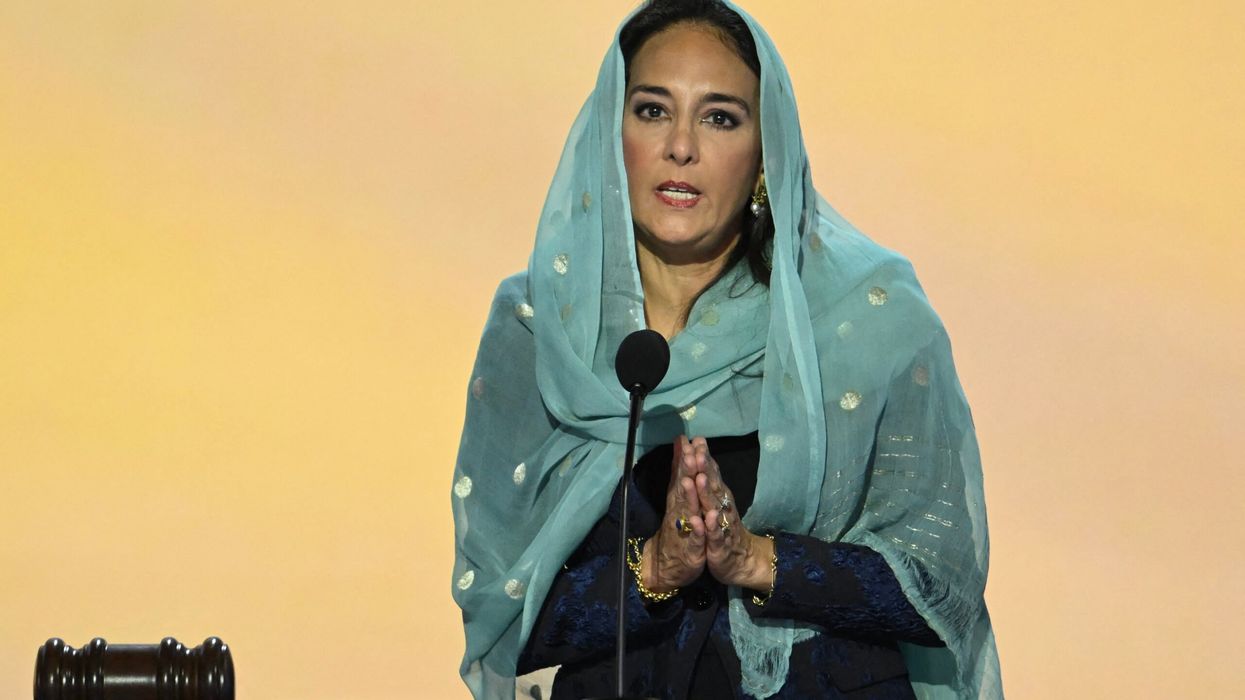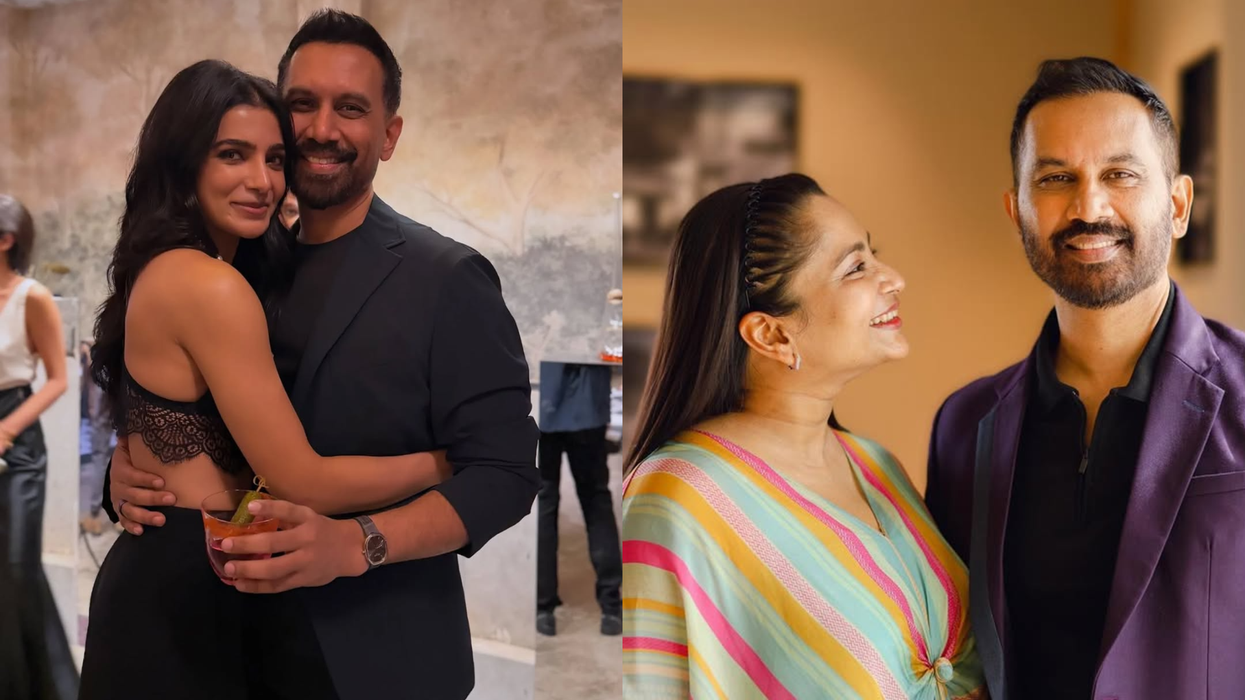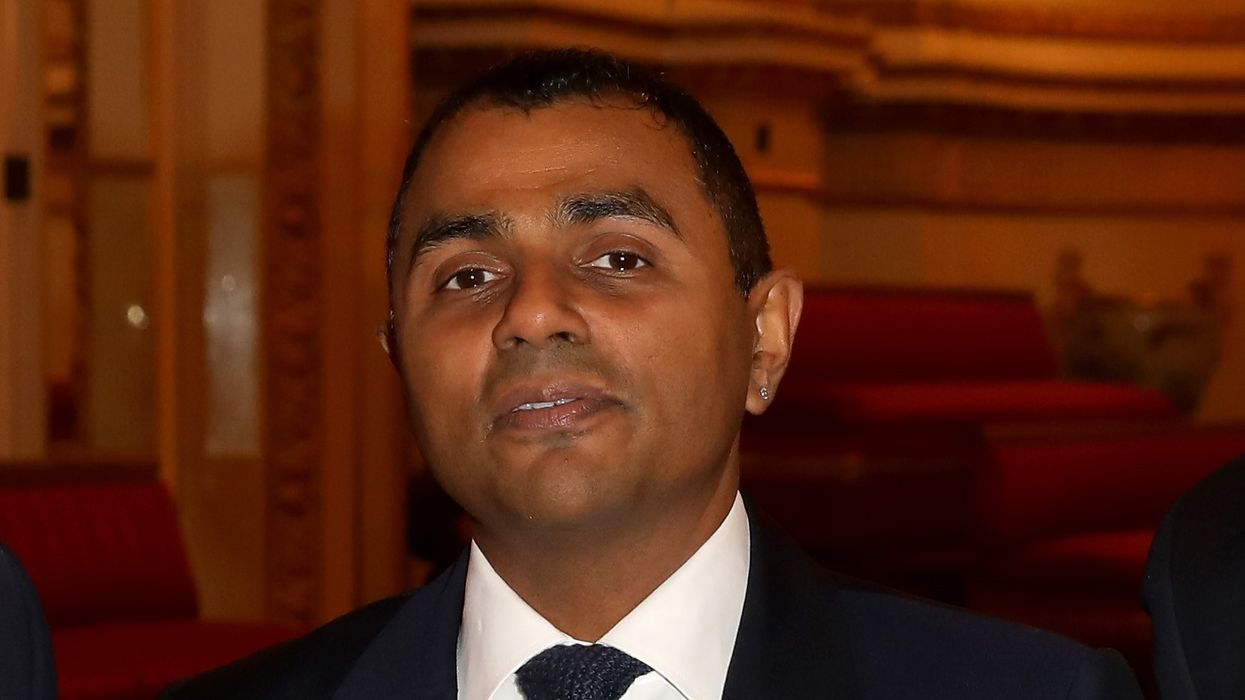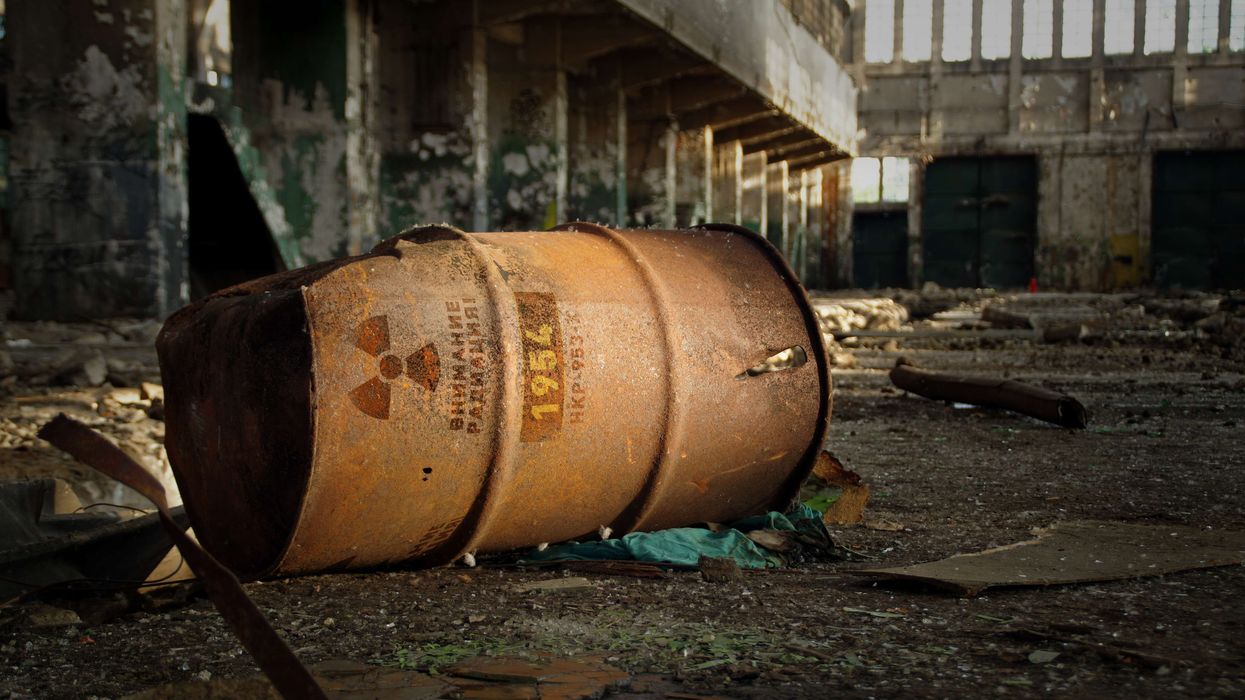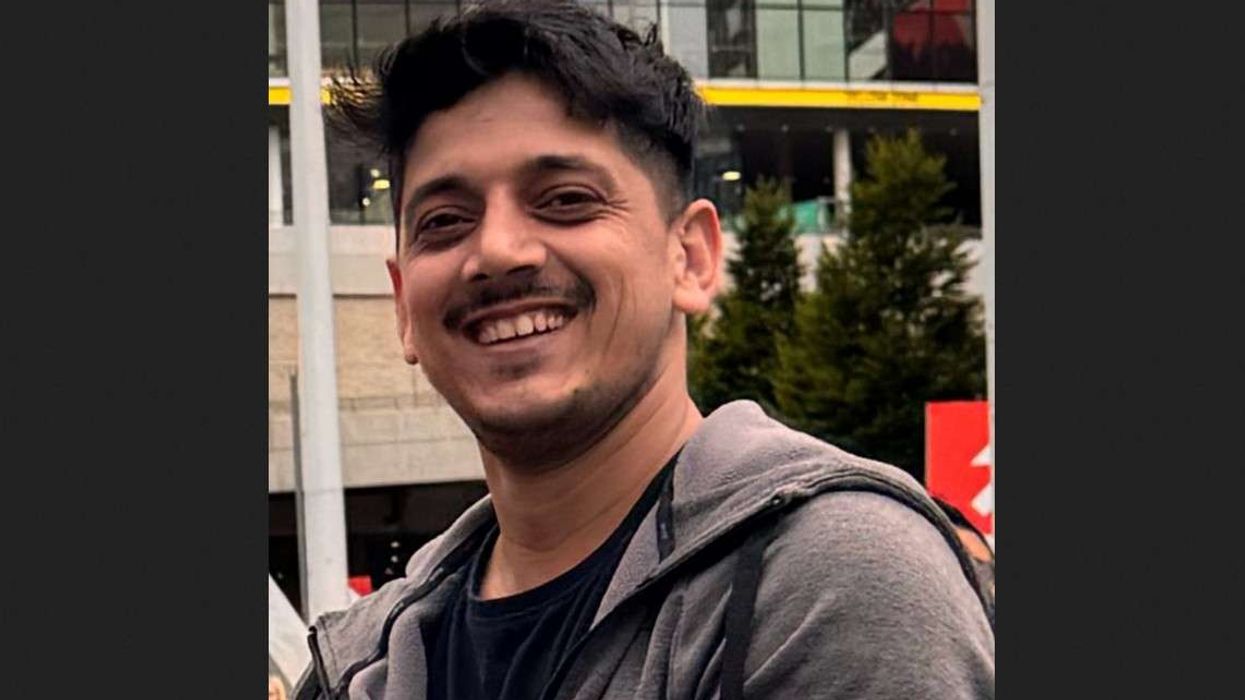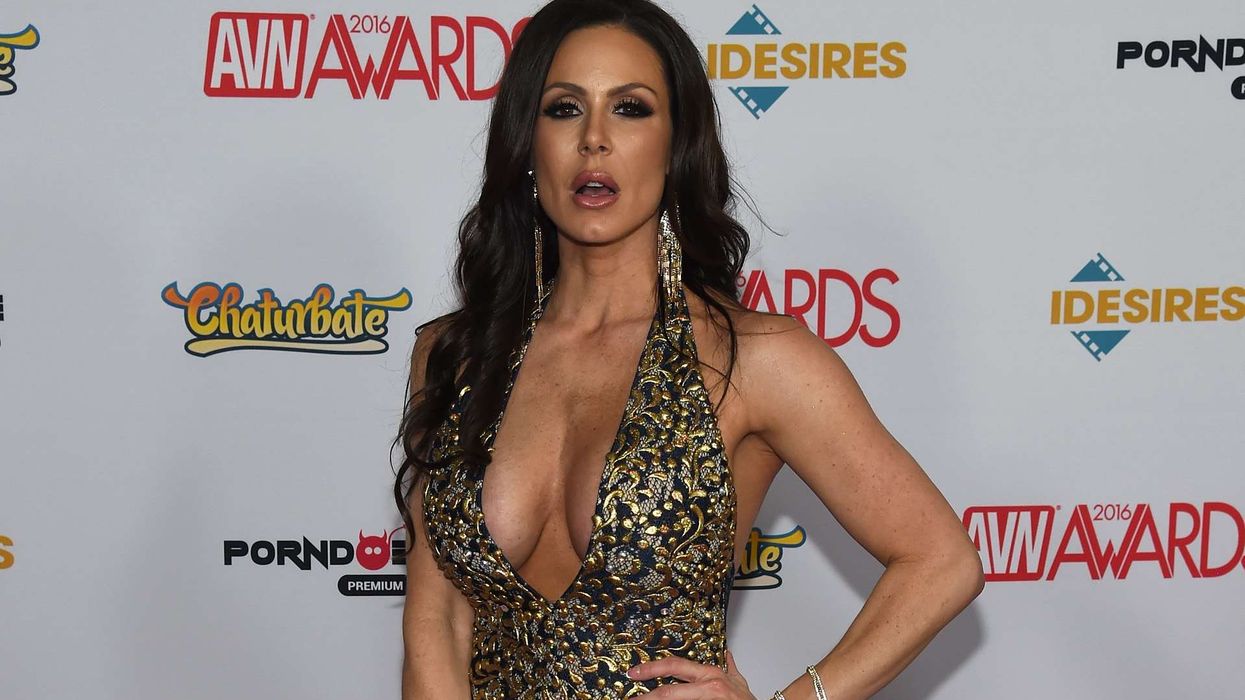After last year’s exposé, we challenge the judiciary to prove it is not institutionally racist
By Barnie Choudhury
The judiciary is 20 years behind the Met Police in accepting it is institutionally racist.
That is the damning accusation from named and anonymous south Asian, black and white judges.
In a follow-up eight-month investigation to our exposé into racism and bullying in the judiciary last July, Eastern Eye has spoken to several judges who say things have got progressively worse.
They accuse the lord chief justice and the Ministry of Justice of using the independence of the judiciary or justice office to hide a culture of racism, bullying and isolation.
It is so toxic that judges are contemplating suicide, relying on anti-depressants and suffering from post-traumatic stress disorder.
District Judge Claire Gilham won her seven-year fight against the MOJ to be a whistle blower, after being sacked for revealing racism and bullying by some of her colleagues.
“The justice system today says there is no bullying, there is no racism. It also actually destroys its records and doesn't do proper investigations.” said the judge, who was a former member of the Independent Police Complaints Commission.
“When I was working with the police, it was unacceptable to make those statements and it was unacceptable not to record and investigate. That's why I'm saying that the judicial system isn't at the stage the police were nearly 20 years ago.”
The Labour MP for Brent North, Barry Gardiner, told Eastern Eye that he was not surprised by accusations of institutional racism, but he urged the judicial office to act.
He said, “That is a really damning statement. And obviously from somebody who knows the system who is trying to operate within the judiciary. For it to come from them that is a real indictment of what's happening.”
Gilham was reinstated and went back to work in 2019. She made clear that she felt supported and valued by her current colleagues.
Fear of reprisals
But many practising justices of colour are too afraid to speak out for fear of reprisals.
One south Asian judge said, “If you look at how much accepted racism and bullying there are the Bar, and amongst solicitors, those people become judges. So, where does that personality go?
“They're bringing with them, those prejudices, to the bench, and they're keeping them. But then you give those same people unlimited power, unlimited backing, in this pyramid organisation where they can do anything, they'll be protected, and it's a time bomb.
“They [the judiciary] make it so hard for us, they want positively to encourage people to go to law because they know that will deter 99 per cent of people, because they won't have the money or the guts to do it.”
Today Eastern Eye also reveals how judges:
- who complain are victimised, ostracised and treated as the problem.
- are chosen to join the elite ranks through informal and powerful ‘establishment’ networks.
- are blacklisted if they refuse to “play the game” or are “anti-establishment”.
We also expose how the lord chief justice has refused to acknowledge the judiciary has a problem.
Legal action against judiciary
Peter Herbert, retired as a part-time judge and recorder in June 2020. He was also the former chair of the Black Society of Lawyers and is taking the MoJ to employment tribunal.
“When the judiciary are faced with allegations that there is a lack of diversity, they refuse to adopt targets, and they blame the Bar and the Law Society for the racism which is within their ranks, and that is not good enough,” he told Eastern Eye.
“Their general view is that justice is colour blind. There are maybe a few bad apples, as the police used to say and still say in some circumstances, but they don't see it as a systemic problem.
“Therefore, whether it's misogyny, whether it's bullying or harassment, discrimination against people with disability, people of different sexual orientation, all of this plays into the same narrative.”
His race discrimination, bullying and victimisation case will be heard in July.
“The key question is, if you cannot treat your judicial colleagues fairly, according to the law, then how on earth can you treat your witnesses, defendants, complainants who come before you every day of the week fairly?” he asked.
“It goes to the heart of whether our justice system, our judges, are above the law, or whether they are subservient to it like the rest of us.”
Eastern Eye has learnt that judges who do complain are treated as if they, and not the system, are the problem.
“You try to deal with it informally by speaking to your senior judge, and they tell you it doesn’t happen,” said one south Asian judge. “Then when you try to make it formal, that’s when the shutters really come down. They spread rumours about you, and they actively get people to complain about you, anything to undermine you.”
Deliberate isolation
It is what happened to District Judge Claire Gilham.
“I was deliberately isolated,” she recalled. “Staff told me that they had been instructed not to discuss any problems with me, and indeed, they were being timed when they spoke to me.
“They were debriefed by a manager. That was after I'd said that I was making a formal complaint. The isolation was worse, and I was effectively forced off.”
And former judge, Peter Herbert, recalled similar accounts.
“I've advised one or two of my colleagues who have suffered bullying and harassment,” he said. “Their personal data has been shared with their white colleagues, and their life has been made a misery to the extent that some have become mentally ill, some have had to retire early.
“In a sense, it's demonstrated that there is a larger mentality of closing of ranks by the mainstream judiciary, rather than embracing and supporting colleagues.”
Judges point to a lack of minority justices in real positions of power as evidence of a huge race problem.
Ethnicity numbers problem
Government figures published in 2020 show how the judiciary remains stubbornly white.
Just two per cent south Asian and one per cent black are circuit judges. It is almost as bad in county courts, where just 31 of the 628 district judges or five per cent are south Asian.
The 2011 Census, which is 10 years out of date, puts the proportion of non-white people in the UK at 14 per cent.
The statistics go to the heart of how judges are recruited, said those who spoke to Eastern Eye.
When we questioned the judicial office about appointments, it quoted from the Judicial Appointments Commission website.
“It is our statutory duty to select candidates on merit, who are of good character. We believe in a judiciary that reflects the diverse society it serves, and we have a statutory duty to attract diverse applicants from a wide field,” it stated.
“We work closely with a range of organisations to promote vacancies to all those who are eligible.”
While this sounds great in theory, the reality appears to be anything but fair, according to those to whom we spoke.
Several judges have told Eastern Eye the same depressing story.
“The appointments are made public, but unless you’re in the right social circles or have the appropriate lineage, you don’t stand a chance,” said one.
Another said, “Over drinks at a party, someone will come to you and ask whether you’ve considered applying for this or that job. Weeks later, surprise, surprise, they’re appointed. A nod is as good as a wink to a blind man.”
“Just look at the names of judges and then trace back their family connections,” suggested another. “You’ll soon find out that the cachet of a name supersedes everything. You’re the right stuff because of what your grandparents, father, mother, aunt or uncle have done previously.
“More than once, some have had to be quietly replaced because they simply didn’t live up to the name and were utterly useless.”
Another judge of colour revealed, “When black or Asian candidates are shortlisted, they’re there to make up the numbers so no-one can accuse them of being racist. If you’re not establishment or haven’t served your time doing some government project, forget it.
“The most important message is, don’t rock the boat. If you refuse to toe the line, these same informal networks will call their friends and make sure you’re blacklisted. You complain, and you’ve signed your own career-death warrant.”
Former judge, Peter Herbert, said this informal nod had helped him in the past.
“I found that I was not even getting an interview where my white colleagues were for the position of record or an employment tribunal judge chair,” he said.
“I wrote to several white male High Court judges I knew, and behind the scenes, lo and behold, I got an interview. And lo and behold, after years of applying, I was appointed, and I don't think that was a coincidence.”
Flawed appointments’ system
While the appointment process is meant to be open and transparent, the secrecy behind racism, racial stereotypes and bullying are kept hidden and meant never to leak, according to judges Eastern Eye interviewed.
“I was at a dinner and we had spoken to newly qualified barristers and lawyers,” said one judge of colour.
“A young Asian man had challenged racial diversity in the judiciary. In the room, the judges said how wonderful and refreshing and right he was. Over dinner they mocked him, mimicked his accent and, like Prince Harry, called him ‘our P*** friend’. There was no way I’d report that. I just had to swallow it, but it was so offensive.”
Another recounted how judges had called minority barristers and lawyers “black bitches and bastards” in the safety of their communal rooms, either oblivious they were being heard or because they felt untouchable.
Racism was one of District Judge Claire Gilham’s complaints about some of her fellow judges.
“Racism, just as rape myths, and sexism and classist attitudes should be challenged within the judicial body, so that people shouldn't think it's a safe place to express these things,” she said.
“I said I was very uncomfortable in a culture which tolerated without challenge. The conclusion was that all I did was to display that I had ‘inappropriate cultural expectations’ to fill the post.”
Judicial support network
But what can judges do?
Two weeks ago (18 March) circuit judge, Kaly Kaul, launched a judicial support network.
According to its website, its aim is to “support, listen, help with your concerns, whether those relate to appointment to higher roles, obtaining full time appointment, advancement, allocation of work, working relationships, issues with those who manage us, welfare, safety at work generally or with the many agencies in relation to which we come into contact”.
“Being a judge is actually quite an isolated job,” she said. “On the one hand, the judiciary is collegiate, but there are challenges there which face us. We just want to be a friendly ear for people to help them, to make the judiciary a strong and independent profession as it should be.”
Her colleague, District Judge Gilham, welcomed the new network and wished she had access to it when she took on the MoJ and the judiciary.
“If I'd had the judicial support network there, they would have kept me alive and real,” she said. “They would have chased with me the responses to my questions rather than allowing them to be simply ignored.
“They would have helped me achieve progress in the grievance process, would have been able to support me at meetings. They would have helped me get an accurate minute of the meetings rather than the wholly partial minute which was made, they would have been able to corroborate what I said at each occasion.”
A spokesperson for the judicial office said, “The judiciary already has its own strong support mechanisms.
“There are mentors, HR advisors available regionally, judicial associations, helplines and other support groups which allow judges to raise concerns and provide support to them.”
EHRC inquiry
But what about claims of poor record keeping when it comes to ethnicity?
Earlier this year, the Leicester East MP, Claudia Webbe, asked a series of written questions about the judiciary and its treatment of judges. It included asking for the ethnic and gender breakdown of judges who were disciplined.
The home office and justice minister, Chris Philp responded in March (1), “The judicial conduct investigations office does not record the diversity profile of complainants, or of judges who are subject to disciplinary action.”
The government also does not record whether there is a link between those who retire early and those who put in grievances on the grounds of race or other discrimination.
Former judge, Peter Herbert said it was time for the Equality and Human Rights Commission to investigate the judiciary.
“I find it absolutely astonishing, 20 years plus after the Macpherson inquiry, the judiciary, led by the lord chancellor, lord chief justice, do not see fit to keep records of diversity in terms of promotion, retention, appointment, but particularly in terms of complaints of discipline.”
Last July, Eastern Eye sent its evidence of bullying and racism to the justice select committee.
A committee spokesperson said, “The justice committee has raised questions over the past 12 months with ministers and the senior judiciary about diversity within the judicial system, as well as covering, in both evidence sessions and reports, wider questions of racial disparity within the criminal justice system.
“The Committee will continue to raise those questions."
But the MP for Brent North, Barry Gardiner, said the time for inquiries were over. He said there had been “umpteen reports” into racism and “they sit on shelves”.
“They now need to take urgent action in making it a safe place for anyone who is a whistle blower, so that they are not automatically seen as the problem, the person to be side lined and ostracised within the organisation,” he said.
“They need, in a sense, to lionise those people and to give them status within the organisation and actually listen to what they're asking to be done.”
The Ministry of Justice told Eastern Eye that any questions about allegations of racism and bullying should be directed to the judicial office.
The government, it said, could not dictate how the independent judiciary investigated its own members.
Bullying allegations
Last July Eastern Eye also urged the lord chief justice to investigate our findings.
To date, neither his office nor he has acknowledged there is a problem. Instead, they hide behind our unwillingness to name our sources, and they refuse to understand why judges of colour feel unable, scared and reluctant to complain formally.
Indeed, in a news conference in February 2020, the lord chief justice denied he had ever known one case of bullying in the judiciary.
Lord Burnett of Maldon appeared to dismiss that bullying could ever exist.
"Bullying is a term which I think one has to be quite careful with, and my strong sense is that in society, in general, it is being used nowadays to describe conduct which, in the past it simply could not have been used to describe.
“But what I can say is that to the extent that there are cases of judges bullying other judges if they come to the attention of the leadership judges, and through the leadership judges up the system to me, we would take appropriate action to try to deal with it. It is obviously completely unacceptable.”
His statement raised hackles among judges of colour.
“That is so typical,” said one. “Let’s bury our heads in the sand and pretend bullying and racism don’t exist. If every other institution, from the police, to the armed forces, admits it has racism, why would the judiciary be exempt? Is it that the judiciary has found a magical cure, where it’s somehow bereft of any difficulty?
“The answer is it isn’t, and it can't be any different from places which are predominantly male, pale, stale and elitist.”
Refusal to act
We asked the judicial office a series of questions based on our investigation.
A spokesperson said, “The judiciary cannot respond to anonymous and unsubstantiated allegations. Where allegations or complaints are made directly to the judiciary they are investigated and dealt with appropriately.
“It is fundamental to the ethos of all judges to treat everyone equally and with respect. The judiciary is committed to ensuring that the environment in which judicial office-holders work is free from bullying and harassment of any kind.”
The office also pointed to the training judges receive, its diversity and inclusion strategy and the existing ways in which they could make formal complaints.
“Formal complaints may also be made to the judicial conduct investigations office, and a whistleblowing policy is in its final stage of development,” said the spokesperson.
“If judges have suffered bullying, harassment, victimisation, or any other grievance from colleagues or anyone else, these processes provide for independent investigation.”
But it is this very system that judges of colour said they could not trust.
“We daren’t raise our heads above the parapet,” said one south Asian judge. “Look what happened to Claire Gilham when she went down the formal route. Do you really expect anyone else to do the same? The problem is real, we’re not making it up, only everyone chooses to ignore it.”
Anger at “no institutional racism” report
South Asian and black judges have also reacted angrily to a government report which suggests that institutional racism does not exist in Britain.
“They took a panel of people of colour who already had a record of denying that institutional racism existed,” one said. “These bastards defecated all over us, and they’ve just made it acceptable for white judges to get away with awful acts of racism, racist language and actions.
“They have betrayed their communities, and, sadly, they don’t even realise it. Like colonial times, they’ve allowed themselves to be used.”
The commission on race and ethnic disparities was commissioned by Number 10 after the Black Live Matter movement, following the death of George Floyd in America.
“It is these types of inquiries which make life for us in the judiciary so miserable, it’s simply appalling,” said one south Asian judge. “What’s going to happen now is that when we complain about institutional, systemic and structural racism, we will be told there is no such thing.”
Analysis
In its 2020 judicial attitudes survey not one mention is made of bullying or racism.
Instead, the 131-page report, published last month (February), stated, “Very few judges feel valued by the government (9%) or the media (12%), and no judges feel greatly valued by the government or media.”
If it had asked specific questions about bullying, intimidation and racism, said one judge of colour, “They would perhaps have realised how disenchanted we were. They simply don’t want to know, and they are operating a don’t ask, don’t tell, bury your head in the sand policy.”
The word “ethnicity” is mentioned 13 times, and it has one page to itself.
The report acknowledged, “In the last census in 2011, 86 per cent of the England and Wales population self-identified as white and 14 per cent self-identified as Asian, black, mixed and other non-white ethnicities. In the 2020 JAS, non- white judges comprised 7.2 per cent of the salaried judiciary that self-identified their ethnicity.”
But non-white judges we spoke to asked where was the analysis or concern that the 2011 figure was 10 years out of date? In 2020, they said, the judiciary probably had under half of the national proportion who were of colour.
One told us, “It simply does not compute to these people that there is a lack of introspection. It isn’t rocket science to know something is badly wrong. They talk a great game, they say the right things, but they don’t walk the walk.
“In private dinner parties, I have sat next to fellow judges who have openly used racist remarks and criticised black and Asian barristers who have had the temerity to challenge them saying ‘who do they think they are?’ They don't realise what they're saying is offensive and I have to bite my tongue.”
The lack of racial diversity is seen in stark detail if you examine the roles office-by-office. The figures show zero black deputy upper tribunal judges, district judges sitting as magistrates or in the high court.
Asians do better, but they are not represented in some tribunal courts or as presidents, chamber presidents, deputy or vice presidents.
This allows the judiciary to spin that it is colour blind, several judges told Eastern Eye. But former judge, Peter Herbert believed there was something more cunning at play.
“From colonial times the thing that the British would do is put different minorities between each other, if they wanted to undermine any revolutionary change,” he said. “So, they will use people of African Caribbean or Asian origin, who have a stake in the system.
“I'm not saying all our brothers and sisters, in a sense sell out. Very many of them actually speak out against overt racism that they find. There are, however, sadly, some who do not challenge racism, particularly when it's perpetrated against their colleagues, and in a sense, become part of the problem.”
But the judiciary did concede it had a problem when it comes to those who wish to retire early.
“A larger proportion of white judges (14 per cent) than Black Asian and Minority Ethnic (BAME) judges (4 per cent) will reach compulsory retirement age in the next five years,” said the report.
“And while there is not much difference between white and BAME judges in the proportion that intend to leave the judiciary early in the next five years, it is also concerning given the efforts to increase BAME representation in the judiciary that almost a third (31%) of all BAME judges are considering leaving early.
“This amounts to 30 of the 120 judges who self-identified as BAME and will not reach retirement age in the next five years.”
The question, said one south Asian judge, is not what will be the effect of so many leaving but why so many wish to quit early.
“That is fairly obvious,” one told Eastern Eye. “There is a Berlin Wall when it comes to promotion, never mind a glass ceiling. We can no longer stomach the number of times we have gone in front of a panel, knowing we are more suitable, better qualified and are more representative only to lose out to a sycophantic, in bred whose father, uncle or aunt had been on the same bench.”
